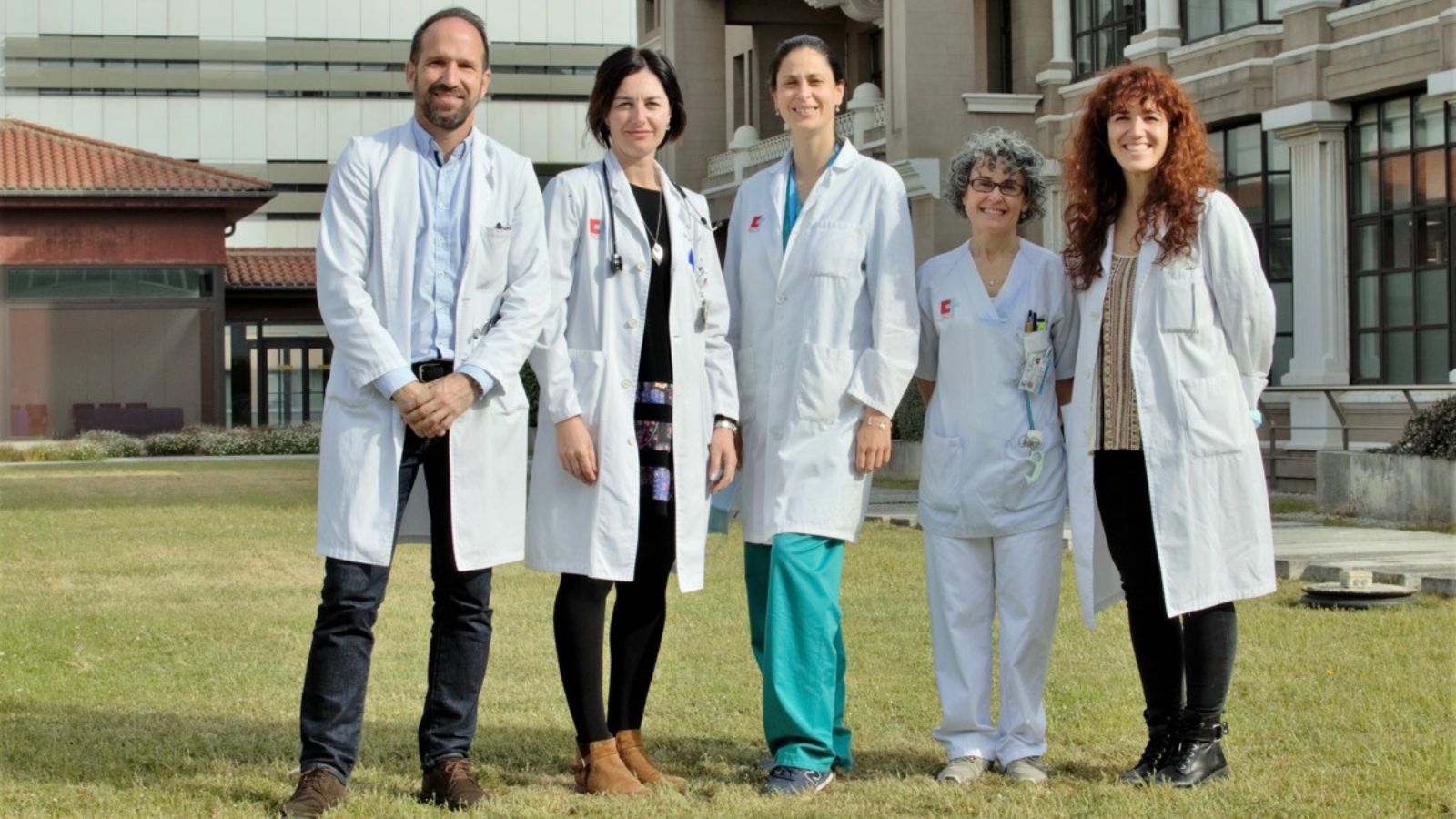Researchers from the IDIVAL neurodegenerative diseases group and the Movement Disorders Unit of the Marqués de Valdecilla University Hospital (HUMV) have participated in a recent study, promoted by the Clínic Barcelona-IDIBAPS, which has detected alterations in the expression profile of four microRNAs, which could make it possible to detect the onset of genetic Parkinson’s disease and follow its evolution in people carrying mutations in the LRRK2 gene.
Parkinson’s disease is the most common neurodegenerative movement disorder. Most cases are of unknown origin, but 10% of patients have genetic mutations that cause the onset of the disease. Among these mutations, those affecting the gene encoding the LRRK2 enzyme stand out, as they are responsible for a large proportion of genetic cases. Thus, people with alterations in LRRK2 have a high risk of developing the disease, but the lack of biomarkers of progression prevents predicting the time of onset of the first symptoms.
The aim of the study, as explained by IDIBAPS group researcher Marta Soto, was to find biomarkers that allow early diagnosis of Parkinson’s disease, i.e. before the manifestation of motor alterations, and in a non-invasive way.
The study determines that in the brains of some of the subjects carrying mutations in LRRK2, although they do not yet show symptoms of Parkinson’s disease, a progressive loss of the neurons that produce dopamine can already be detected by means of a test called DaT-SPECT. Thanks to this test, the researchers in the study have been able to better classify patients and study changes in the expression of microRNAs at different stages of progression.
According to the results, there are specific alterations in carriers with biomarker potential. In fact, as Marta Soto has pointed out, four microRNAs have been identified (miR-4505, miR-8069, miR-6125, and miR-451ª) capable of discriminating carriers of the G2019S mutation of LRRK2 with symptoms and without symptoms.
“This finding is relevant, as it is the first time that the expression of microRNAs in premotor stages of Parkinson’s disease has been analysed and shows their usefulness as indicators of disease onset and progression,” Soto said.
The HUMV Movement Disorders Unit has participated in the study, headed by the head of the Neurology Section and researcher of the Neurodegenerative Diseases group at the Valdecilla Research Institute (IDIVAL), Jon Infante, who has also advanced that “the results of this study will allow us to anticipate and predict the onset of the disease in those people carrying the mutation whose risk of developing it until now we did not know”.
Early detection and new treatments
Exploring the long period between the onset of the disease and the appearance of the first symptoms is key to finding new mechanisms and treatments. Likewise, in the specific case of people carrying mutations in the LRRK2 gene, the administration of drugs that inhibit the enzyme is postulated as a therapeutic strategy that is already being evaluated in clinical trials. This reinforces the need for biomarkers to track patient progression in pre-symptomatic stages.
This study was funded by the Michael J. Fox Foundation for Parkinson’s Research and is essential to advance our understanding of Parkinson’s, a common disease whose incidence is expected to increase in the coming years. Its causes are known, although genetic and environmental factors are known to be involved, and in some cases it is difficult to diagnose accurately.
At the moment there is no curative treatment for the disease, but stabilising and symptom control measures are available. One of the main problems in finding effective therapies is precisely that by the time motor symptoms appear, the disease is already advanced and many of the brain’s dopamine-producing neurons, which are essential for motor function, have already died irreversibly.
For this reason, as Dr. Infante emphasised, it is essential to carry out research in the pre-symptomatic stages, both in the case of Parkinson’s and other neurodegenerative diseases, “if we want to apply treatments that restore or modify the course of these pathologies”.
Ref. Differential serum microRNAs in premotor LRRK2 G2019S carriers from Parkinson’s disease. NPJ Parkinsons Dis. 2023 Feb 2;9(1):15. doi: 10.1038/s41531-023-00451-x. Marta Soto, Manel Fernández, Paloma Bravo, Sara Lahoz, Alicia Garrido, Antonio Sánchez-Rodríguez, María Rivera-Sánchez, María Sierra, Paula Melón, Ana Roig-García, Anna Naito, Bradford Casey, Jordi Camps, Eduardo Tolosa, María-José Martí, Jon Infante, Mario Ezquerra, Rubén Fernández-Santiago






















